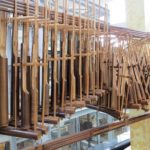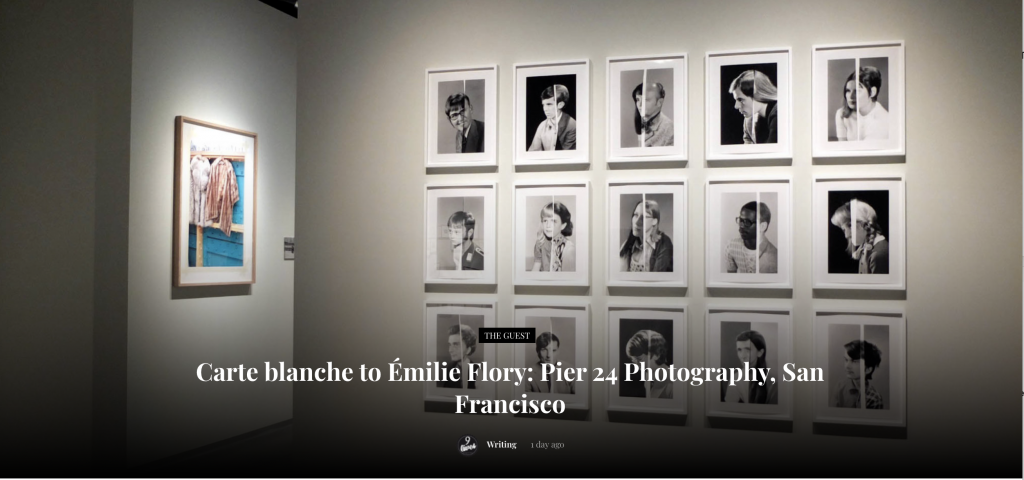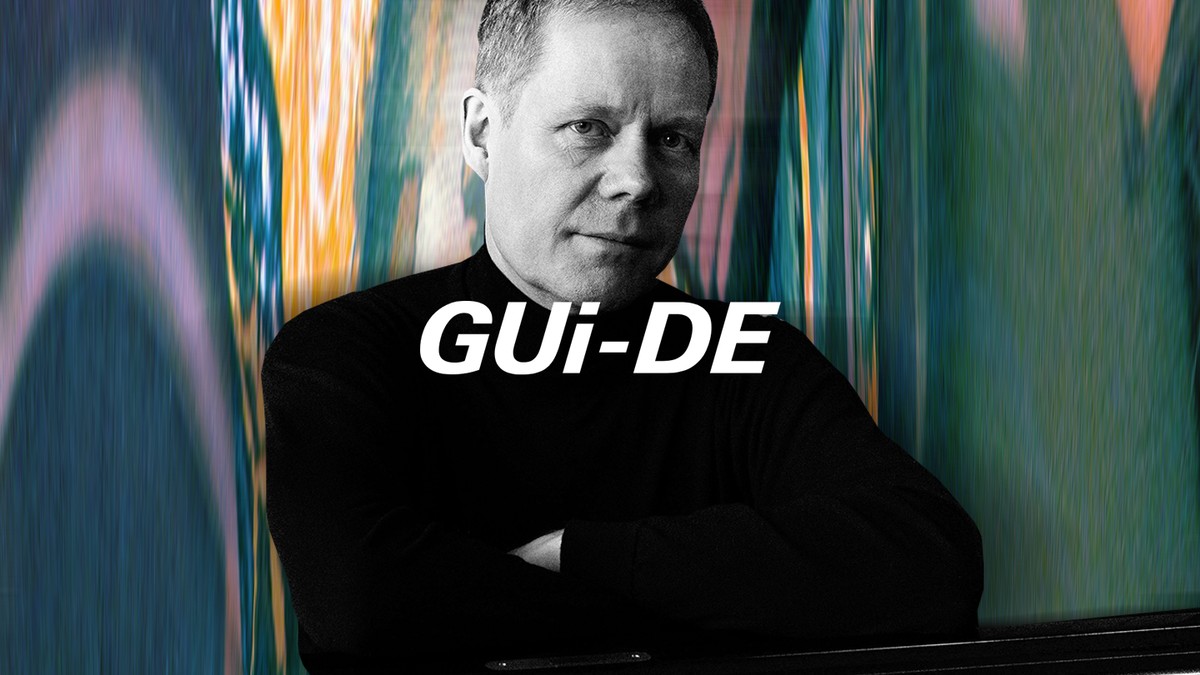Espectacular cortina
2012 - Sculpture (Sculpture)
Pia Camil
Camil has made numerous paintings and photographs of halted projects along Mexico’s highways (she calls them “highway follies”), and of abandoned billboards that look like theater curtains dramatizing failed capitalist strategies. (Espectacular, the colloquial Spanish term for “billboard,” also translates more literally as “spectacle,” and of course recalls Guy Debord’s famous 1967 book The Society of the Spectacle .) In Mexico, the urban landscape has been taken over by billboards; they are totally integrated into the landscape. With overuse and reuse, they get scrapped, reshuffled, and recycled. In Espectacular (cortina) ( Spectacular [Curtain] , 2012), Camil abstracts such billboards into a multicolored fabric curtain to probe the multiple meanings of espectacular. The curtain is intended to work not only as a three-dimensional painting, but also as a screen that obstructs or conceals another space, causing the viewer to wonder: if nothing is on the other side of the curtain, who is the audience and who are the actors?
Through her installations and performance-based work, Pia Camil demonstrates a keen interest in failure. She often explores urban ruins—decay associated with the Mexican urban landscape, and specifically traces of modernist culture and art history that have been left behind. By incorporating appropriation and performance methods, Camil enacts a critical questioning of previously identified discourses, deconstructing preestablished references in order to generate a sense of estrangement in which she can explore the political connotations of the use of space.
Colors:
Related works sharing similar palette

© » KADIST
Pierre Leguillon features: “Diane Arbus: A Printed Retrospective, 1960-1971” December 6, 2008 – February 7, 2009 This first retrospective of the works of Diane Arbus (1923-1971) ever organized in France, brings together all the images commissioned to the New York photographer by the Anglo-Saxon press in the 1960s...

© » KADIST
Pierre Leguillon features: “Diane Arbus: A Printed Retrospective, 1960-1971” December 6, 2008 – February 7, 2009 This first retrospective of the works of Diane Arbus (1923-1971) ever organized in France, brings together all the images commissioned to the New York photographer by the Anglo-Saxon press in the 1960s...

© » KADIST
Raymond Pettibon
2007The five works included in the Kadist Collection are representative of Pettibon’s complex drawings which are much more narrative than comics or cartoon...

© » KADIST
Catalina Ouyang
2021font VII by Catalina Ouyang is part of an ongoing series of ‘fonts’, or sculptures, inspired by Catholic holy water vessels...

© » KADIST
Araya Rasdjarmrearnsook
2005The Class (2005) by Araya Rasdjarmrearnsook challenges the viewer’s personal sense of morality and tolerance by depicting a classroom from hell...

© » KADIST
Marc Nagtzaam
2014Nagtzaam’s medium is drawing and his repertory of forms varies from abstract hard-edge and wall drawing to the reproduction of written material that he collects from art magazines...

© » KADIST
Zai Kuning
2014Converting is a piece about the Orang Laut, often called Sea Nomads, that inhabited the Riau archipelago...

© » ARTS EQUATOR
Austrian singer collaborates with ‘angklung’ musicians at Indonesian Cultural Night in Vienna (via The Jakarta Post) | ArtsEquator Thinking and Talking about Arts and Culture in Southeast Asia ArtsEquator Radar July 10, 2018 Angklung musicians featuring Austrian soprano Maria Theresia Gruber staged the song Bengawan Solo at the Indonesian Cultural Night event held at Vienna’s Weltmuseum on Tuesday evening...

© » KADIST
Sung Hwan Kim
2007An early work in Sung Hwang Kim’s career, the video Summer Days in Keijo—written in 1937 is a fictional documentary, the film is based on a non-fiction travelogue, In Korean Wilds and Villages , written by Swedish zoologist Sten Bergman, who lived in Korea from 1935 to 1937...

© » KADIST
Adelita Husni-Bey
2011Postcards from the Desert Island is a remake of a 50s educational film Holiday from the rules in which four children interact with an omniscient narrator who teleports them to a tropical island where there are no rules...

© » KADIST
Rachel Rose
2019First Born by Rachel Rose is part of a series of works titled Borns which expands on the artist’s longstanding interest in the organic shape of eggs...









